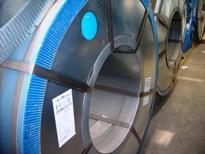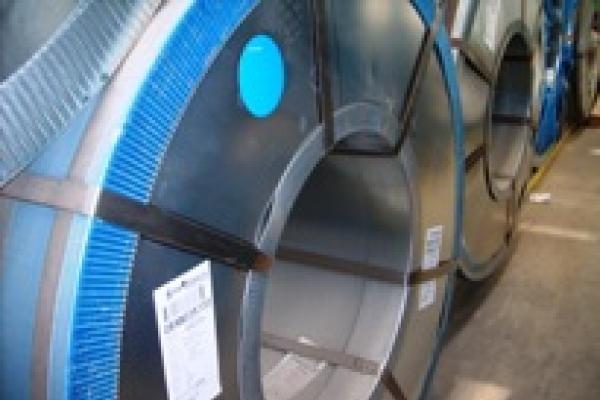
Steamship Mutual
Published: January 01, 2009

Coils of steel sheeting are often presented for shipment and it is important that’s ships personnel are familiar with the different types and the specific handling, loading, stowage and securing arrangements that need to be adhered to in line with industry best practice.
Cargo Type
The types of steel sheeting coils that may be presented for shipment are either:
- hot rolled steel, which is uncovered and may be rusty and/or wet upon loading, and may be loaded in the rain, or
- cold rolled steel or galvanised steel coils which will have metal or possibly paper/card protection and is highly susceptible to damage claims and which should not be loaded in the rain and kept dry.
The coil shape is maintained by steel bandings
Loading
Coils are handled on the wharf by fork lift trucks with a round ram attachment that has no sharp edges in place of the forks; this is used to lift the coils through their central core so as not to damage them. For loading onboard, the coils are generally lifted using steel wire braided webbing slings, or some other specially designed lifting device, all of which are designed and used to avoid damage to the coil sheet.
Stowing
Steel coils should be given a bottom stow position and are to be loaded with the core aligned fore and aft, and flat wooden dunnage is to be laid athwarthship on the deck and against hold side bulkheads/spar ceiling either in two or three lines, dependent on the width of the coils, across the width of the hold, and needless to say, the wood selected for dunnage and wedges should be of sufficient strength for the task. Loading is commenced from each side of the hold working towards the centre with each coil loaded up against its neighbour, such that the final coil loaded in the centre is the key to locking the stow; this final coil is loaded between the last two on the tanktop such that the lower edge of the final coil is at least one third below the top of the two coils it is loaded onto such that its weigh will provide a good lock to the stow. Depending on coil size and hold width it may be necessary to use two locking coils to get a satisfactorily locked stow. Subsequent tiers of coils are loaded between the coils on the tier below and stows may be two or three tiers high; it is preferable to avoid a single tier of coils due to additional locking affect imparted on the lowest tier by subsequent tiers above. However, adequate lashing of the locking coil(s) to those either side in a single tier will ensure a good stow. When stows are two or possibly three tiers high, and coils of different sizes are being loaded, it has to be ensured that all coils are resting properly on the coils beneath them.
Securing/Lashing
The accepted method of securing coils is to lash them together core to core, with those on a second or third tier lashed to the two coils below, on which it is resting, using metal strap banding which is tightened and clamped by a pneumatic tool. A locking or single coil may be lashed by a metal banding strap passed over the top of the coil body in a figure of eight passing through the cores of the two coils upon which it is resting. Coils on the lowest tier should also be wedged on either side with wooden wedges to help to secure them in place. If the stow does not fill the hold/compartment then the open face of the stow will have to be adequately secured by use of either timber shoring or wire lashings secured to the hold side bulkheads, or a combination of the two. Where wires are used these should be protected where they are led around any sharp edges where the wire and/or cargo may be damaged. All lashing wires, terminations, shackles, turnbuckles and D rings must be certified, in good condition and of adequate strength for the task. If there is only one or a handful of coils, then these should be adequately secured by either placing them in cradles, by shoring with timber, using wooden wedges or lashed in position.
As for all such cargos the contents of the vessel’s “Cargo Securing Manual” and the advice contained in the IMO publication “Code of Safe Practice for Cargo Stowage and Securing” should be consulted prior to loading and securing onboard.
As for carriage, the integrity and tightness of the lashings should be checked regularly and any problems encountered rectified.
Vessel Must be Cargoworthy
The cargoworthiness of the vessel must be maintained and in this regard the hatchcovers must be weathertight, with all securing devices utilised and adjusted to ensure that all hatch pontoons are providing a good seal. Hatch coaming drain channels must be kept clean of cargo residue and rust scale, and drains to deck unblocked with fire caps removed. Bilges have to be operational and, even if bilge alarms are fitted, manual soundings must be taken daily to detect any ingress of water. Ballast tanks which border the cargo hold, be they double bottom, wing or forepeak, along with their access manhole covers, sounding and vent pipes must all be intact and frequent hydrostatic testing by overflowing tanks to deck must be undertaken as part of the vessel’s planned maintenance system in order to ensure their integrity.


